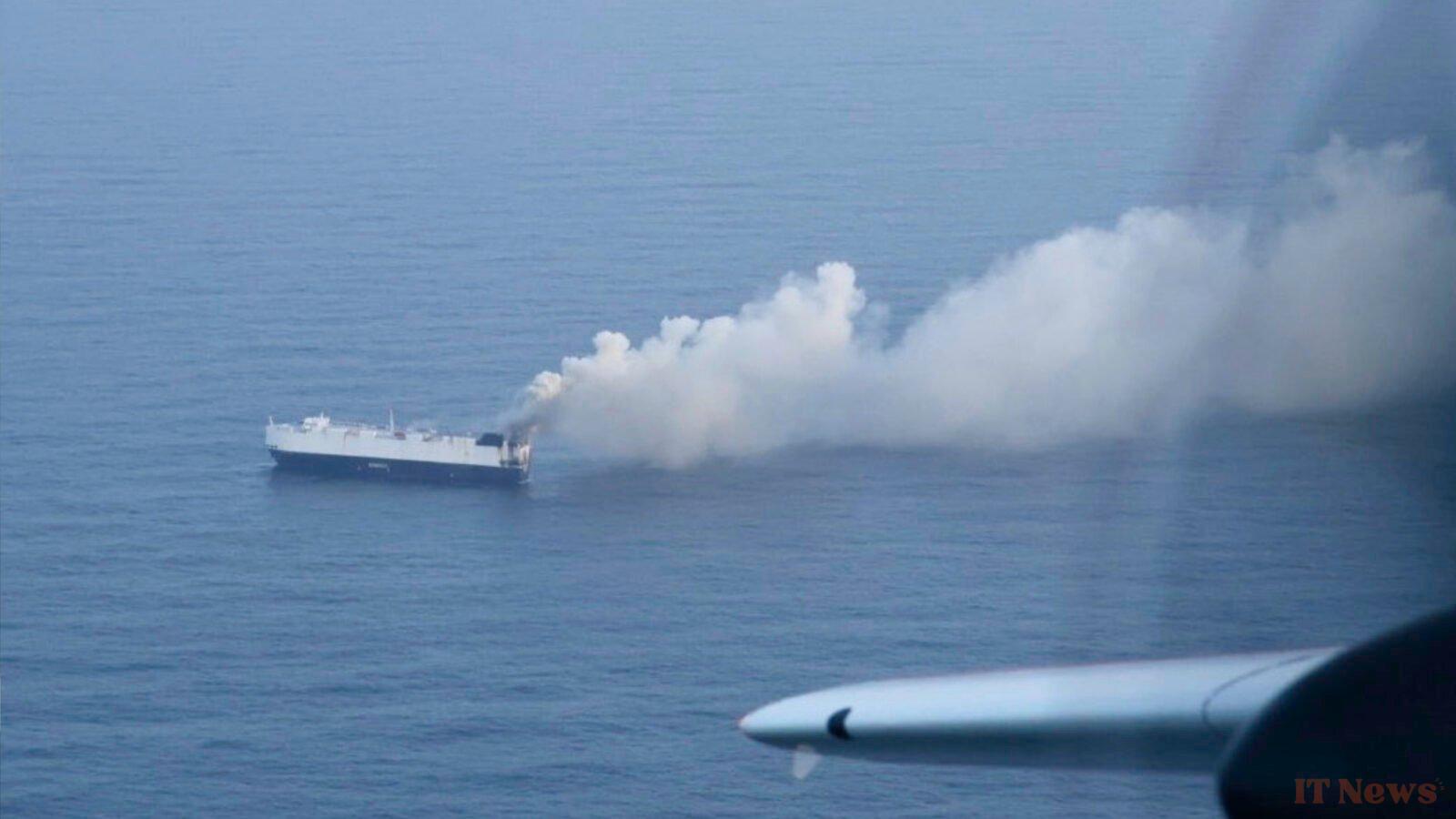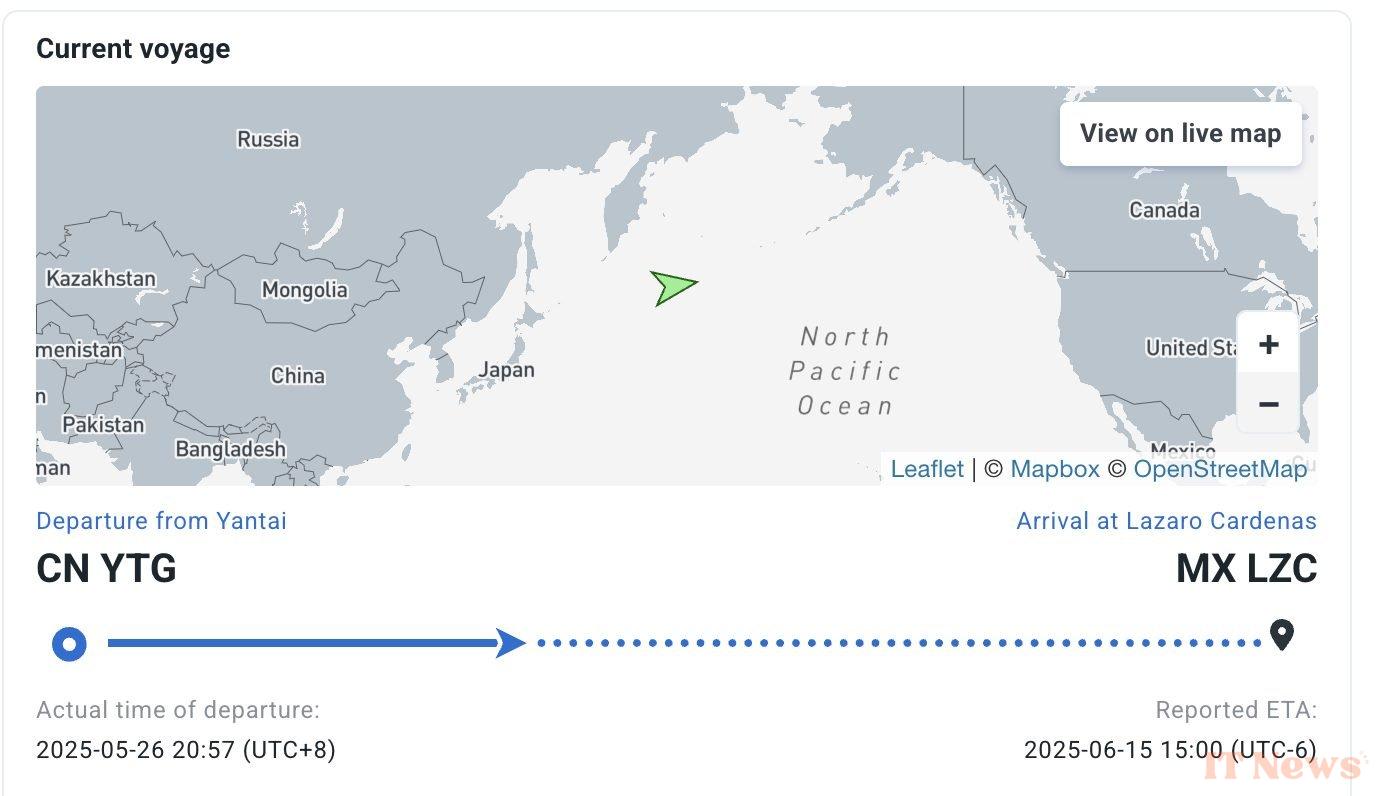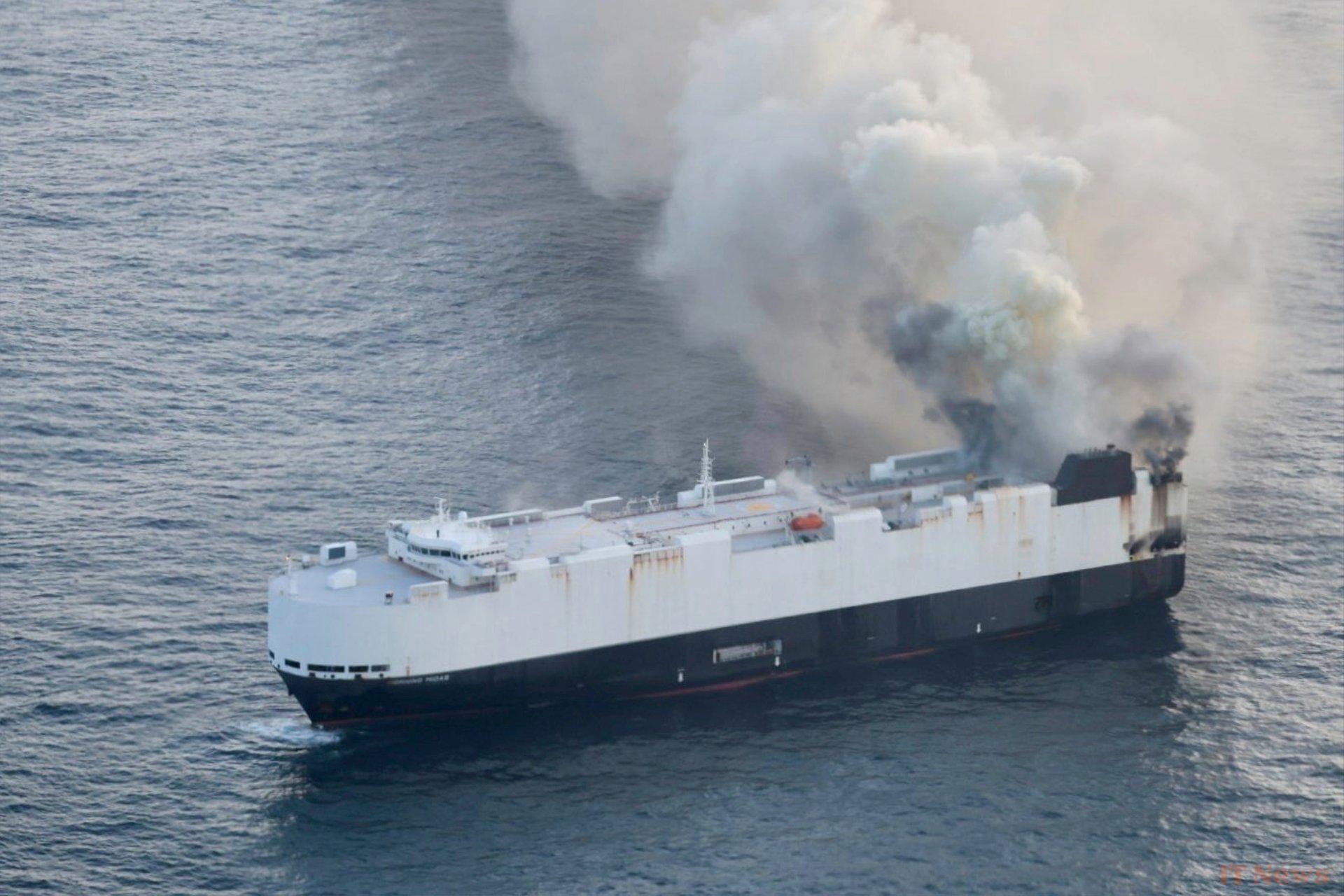Twenty-two crew members left their ship on Wednesday, June 4, amid a fire that broke out on their cargo ship, 1,200 miles from Anchorage, Alaska. Unable to contain the fire, they left the ship in a lifeboat before being rescued by another nearby commercial vessel.
A spokesperson for the U.S. Coast Guard said its crews decided to let the fire burn out and wait at a distance. The reason? Of the 3,000 cars on board the cargo ship, named the "Morning Midas," 800 were electric cars with lithium-ion batteries. In their presence, the risk of explosion is high.
The cause of the fire is still unknown, but the possibility of overheating of the electric car batteries is being considered. The ship was scheduled to transport these models to Lázaro Cárdenas, Mexico, on June 15. It was coming from Yantai, China, and had stopped in Shanghai and Nansha, two major ports for Chinese car exports to the rest of the world.
The situation is reminiscent of another, that of the Felicity Ace in 2022. Slightly larger than the Morning Midas, this cargo ship sank in the Atlantic after a fire broke out on board. Its cargo included 4,000 vehicles, some of them Porsches and Bentleys. The fire lasted nearly two weeks.
Sodium ion to prevent electric car fires
For battery suppliers, protecting accumulators from the risk of overheating has become a priority. Everything will depend on the chemistry used. As an alternative to current solutions, which have the advantage of being inexpensive, a new formula is emerging. This is the sodium-ion battery cell, derived from the LFP (lithium-phosphate-iron) battery.
In addition to offering a longer life cycle and faster recharges, this battery would avoid overheating, even in cases of intense stress such as a collision. In terms of energy density, CATL's future battery, called Naxtra, will reach 175 Wh per kg, the equivalent of a high-end LFP battery.





0 Comments